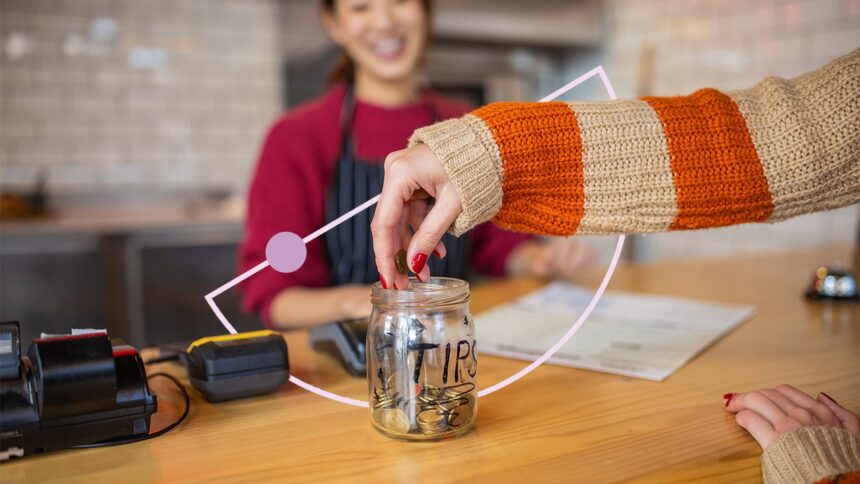If there is one thing Americans can agree on, it’s confusion about falls.
Tips are sometimes predicted, but in other circumstances it is unknown. Do you pick up your food order and tilt the doordasher you dropped at your door? Tie the plumber above the bill they give to you? If so, how much? Is 20% generous or new normal?
We set out to learn how Americans will transform in 2025, especially given the economic change. After all, 63% of Americans hold at least one negative view about the tip, which has risen from 59% last year.
However, the proportion of Americans who have always tipped is stable compared to recent decline. It appears they haven’t thrown the towel into the chip yet.
Tips are part of the American way of life. It doesn’t go away so quickly that we might complain about it.
– Ted Rothman, Senior Industry Analyst at Bankrate
Bankrate key insights on chips in 2025
Bank Rate Data Center
Since 1976, Bankrate has been the go-to source of personal financial data, publishing the average fees for the most popular financial products and tracking the experience of consumers across the country.
See more
Two in three Americans have at least one negative view of tips
Of the 63% of Americans who have at least one negative view, the most common negative views are:
- Companies need to pay their employees better, rather than relying on tips (41%, up from 37% last year)
- Chip culture has gone out of control (up 41% from 35% last year)
- Annoyed by pre-entered chip screen (38%, up from 34% last year)
Furthermore, 27% say they have few or no tips when they present a pre-entered chip screen (up from 25% last year).
“High cost of living is headwinds, and many people have resented all the cutting edge creep that has occurred in recent years, and are being asked to give hints in previously unconventional environments,” explains Rothman.
16% would be willing to pay a higher price if they could eliminate tipping from 14% last year. 14% are confused about who and how much they are trending from 11% last year.
10% say they always tilt the same amount the same as last year, regardless of the quality of service.
Restaurant participants lower their bills
According to Bankrate’s 2025 discretionary spending survey, approximately two in five Americans (39%) expect to spend less on meals this year. Servers that rely on tips may feel that shift.
35% typically tilted at least 20% in sit-in restaurants, a slight decrease from 37% last year.
58% say that tip volume is most affected by service quality, but with a decline from 64% last year, service providers, including restaurant servers, could struggle to get generous tips with good service.
Additionally, 26% say they feel good when they leave generous tips from 29% last year.
Consistent falls have been leveled after decline
Since launching this survey in 2021, it has reported that the proportion of Americans who “always” give tips for certain services each year has been declining almost steadily. This year, there is a consistent balance of tipper numbers.
More Americans complain about the transition, but after a steady decline in recent years, the frequency of falls has remained stable.
– Ted Rothman
Bankrate Senior Industry Analyst
In fact, more people have said “always” the hint that “always” is “always” for five of the nine categories of service providers we surveyed. The only categories that see the decline this year are hairstylists/barbers (54%, down from 55%), coffee shop baristas (18%, down from 20%), and housing services/repairers (9%, down from 10%). 15% of people, the same percentage as last year, say they’re chipping furniture/appliance delivery workers all the time.
ZERS and millennials are less likely to tilt
Tip potential generally increases with age, with Zers and millennials standing out as the most frequent tippers. For example, among those using these services:
- 25% of Gen Zers and 45% of Millennials always have hairstylists/barbers, 67% of Gen Xers and 71% of Boomers.
- 43% of Gen Zers and 61% of millennials always tip at sit-in restaurants, with 83% of Gen Xers and 84% of Boomers.
- 23% of Gen Zers and 36% of millennials constantly chip taxi/rideshare drivers, 50% of Gen XERS and 61% of Boomers.
This trend may be cultural, economic, or both. In particular, two younger generations were most likely saying that lack of stable income is the reason money has a negative impact on mental health. If younger people’s salaries are already thin, they may not be more likely to add additional dollars to the bill.
We also know that from 37% last year, about one in three Americans (35%) usually tips at least 20% at sit-in restaurants. This includes 16% of Gen Zers and 30% of Millennials, 40% of Gen XERS and 49% of Boomers.


